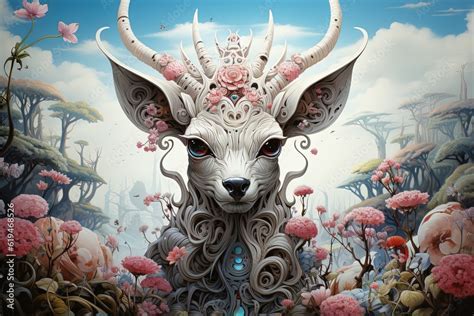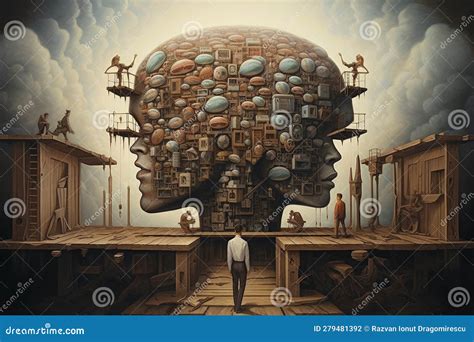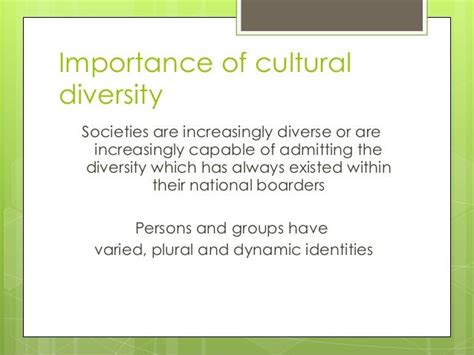Within the depths of one's subconscious lies a captivating realm, where emotions intertwine with desires, and vivid imagery unfolds. These ethereal landscapes, often shrouded in mystery, have intrigued humanity since time immemorial. In this exploration of the human psyche, we embark on a journey to unravel the intricate tapestry that dreams weave, peering into the enigmatic world of a wounded soul.
As we navigate through the labyrinthine corridors of the mind, we encounter a thread of anguish that transcends the realms of wakefulness. The presence of this visceral pain reverberates throughout a dreamer's slumber, manifesting itself through various symbolic representations. The dream becomes a poignant window into the depths of the human experience, where words fail, and the language of the soul takes precedence.
Within the boundless expanse of the dream world, the bleeding person becomes a central figure, embodying a potent metaphor for vulnerability and suffering. This metaphor, woven delicately through the fabric of dreams, exposes the raw state of the dreamer's emotions, inviting introspection and self-discovery. It is through the act of embracing this vulnerability that the dreamer can begin to comprehend the profound messages that dreams unravel.
At the heart of this exploration lies the recognition of the intricate interplay between the conscious and the unconscious. Dreams, like whispers from a hidden universe, serve as a gateway for the wounded person to confront their deepest fears, longings, and unresolved conflicts. Within this realm, symbolism takes center stage; emotions are given shape, and the whispers of the subconscious find their voice, whispering truths that might be too overwhelming to face in the waking world.
The Captivating Realm of One's Nightly Vision: Exploring the Enigmatic World of Dreams

Introduction: Within the realm of our unconscious mind lies a domain brimming with captivating imagery and perplexing narratives, known as dreams. These nocturnal experiences, shrouded in enigma, have long fascinated and intrigued both scholars and ordinary individuals alike. As we surrender to the ephemeral realm of slumber, our subconscious thoughts and desires intertwine, giving birth to a tapestry of emotions, symbolism, and hidden meanings. By delving into the mesmerizing world of dreams, we embark on a journey that transcends the boundaries of reality, presenting us with a mosaic of vivid, yet often elusive, experiences.
The Symbolism of Blood in Dreams
In the realm of nocturnal visions, there exists a deeply profound symbology that often appears in the form of blood. This enigmatic presence holds intricate meanings that reach beyond the conscious understanding of individuals. It is through the mystical language of dreams that the mind unravels the secrets hidden within the vibrant essence of life itself. In the realm of slumber, blood emerges as a potent symbol, carrying within it a myriad of connotations and significance.
Powerful and evocative, blood within dreams pulsates with an intensity that commands attention. It represents the very essence of life and vitality, the ceaseless flow that gives rise to existence. Its crimson hue serves as a poignant reminder of both the power and fragility of human existence. Within the realm of dreams, blood acts as a poetic representation of a multitude of emotions and states of being.
As dreams unfold, the presence of blood may stand as a harbinger of transformation and rebirth. It signifies the shedding of the old, allowing space for the new to emerge. Just as blood carries essential nutrients to nourish the body, its appearance in dreams may symbolize the need for emotional nourishment and growth. It points towards the potential for renewal and a call to embrace change.
Blood within dreams is not limited to life alone, but also serves as a powerful manifestation of vitality and passion. It embodies desire, intensity, and raw emotions. The symbolism of blood in dreams may unravel the depths of one's desires, urging the dreamer to explore their most primal instincts and desires. Through these dreams, passions and longings are laid bare, presenting an opportunity for self-discovery and exploration.
However, the symbolic presence of blood in dreams also carries a darker undertone. It can represent anguish, pain, and suffering. The sight of blood may reflect inner turmoil or an emotional wound that requires attention and healing. In such instances, dreams become a canvas upon which unresolved traumas manifest, inviting the dreamer to acknowledge and confront their inner struggles.
In the realm of dreams, the symbolism of blood remains a potent force, guiding individuals towards deeper self-awareness and understanding. It acts as a language the unconscious speaks, expressing emotions, desires, and fears that often elude our waking minds. To decipher the mysterious language woven within dreams is to embark on a journey of self-discovery, unearthing the hidden meanings that lie within the vibrant symbol of blood.
Unveiling the Subconscious: Insights into the Inner Depths of our Psyche

The realm of our dreams holds a profound significance, serving as a key to unlock the depths of our subconscious minds. These ethereal experiences, devoid of rational limitations, offer a unique glimpse into the inner workings of our psyches. Through the analysis of dream symbolism and the exploration of hidden desires and fears, we can begin to unravel the intricate tapestry of our true selves.
Within the boundaries of our slumber, a vivid spectrum of emotions manifests, paving the way for a profound self-discovery. Dreams, encompassing enigmatic narratives and surreal imagery, act as a portal to untapped aspects of our identity. Embedded within these nocturnal visions are the unspoken longings, unresolved conflicts, and buried memories that reside within our subconscious realm.
Delving deeper, the language of dreams reveals itself through a plethora of symbols and metaphors, often shrouding their true meanings in mysticism. In this enigmatic realm, the intricate web of our desires and fears is interwoven with archetypal representations, painting a vivid reflection of our innermost selves. By deciphering these profound symbols and unraveling their cryptic codes, we can navigate the intricate depths of our own psyche.
The mysteries held within our dreams do not simply fade with the rising sun; rather, they offer invaluable insights that extend beyond the realm of sleep. The interpretation of dream symbolism brings us face to face with our subconscious desires, enabling us to gain a deeper understanding of our true motivations and aspirations. It is through these dream fragments, like scattered puzzle pieces, that we can piece together a clearer image of our identity and unravel the hidden threads that intertwine our waking and dreaming lives.
In essence, the exploration of our dreams unveils the enigmatic beauty of our subconscious minds. Through the decoding of symbols and the analysis of emotional landscapes, we can delve into the depths of our psyche, shedding light on the complexities that shape our conscious existence. By embracing and understanding the significance of our dreams, we embark on a transformative journey towards self-discovery and a deeper connection with our inner selves.
The Connection between Dreams and Emotional State
Explore the intricate relationship between dreams and one's emotional state, uncovering the profound impact that these subconscious experiences can have on human psyche. Delve into the profound interplay between our nocturnal visions and the complex tapestry of our emotions, unlocking a deeper understanding of the inner workings of our minds.
Uncover the profound interconnections between the realm of dreams and our emotional landscape, as these ethereal narratives intertwine with the very essence of our being. Through the mysterious language of symbolism and metaphor, our dreams offer a symbolic reflection of our emotional states, providing glimpses into the depths of our psyche and the nature of our innermost thoughts and feelings.
Discover how dreams function as both a receptacle and a mirror for our innermost emotions, acting as a conduit for the subconscious mind to process and express deeply-rooted feelings that may elude our conscious awareness. With their enigmatic imagery and surreal narratives, dreams offer a unique realm where emotions manifest in abstract and often transformative ways.
Unlock the profound insights that dreams can offer into our emotional well-being, shedding light on unresolved inner conflicts, hidden desires, and unresolved past traumas. By closely examining the emotional content of dreams, we gain an invaluable window into the complexities and intricacies of our psychological makeup, allowing us to embark on a journey of self-discovery and emotional healing.
In conclusion, the connection between dreams and our emotional state is an ever-evolving realm of exploration. By delving into the symbolic language of our dreams and acknowledging the profound insights they offer, we can develop a deeper understanding of ourselves and harness the power of dreams to enhance our emotional well-being.
Decoding the Hidden Messages: Analyzing Dream Symbols

Delving into the enigmatic realm of unconscious visions, one can unravel the cryptic symbolism embedded within the ethereal landscapes of dreams. In this section, we will explore the intricate network of meaning and significance that lies beneath the surface of these nocturnal reveries.
As we delve into the intricate tapestry of dream symbols, it becomes apparent that these metaphoric expressions carry profound messages from the depths of one's subconscious. Through careful analysis and interpretation, these symbols can offer valuable insights into one's emotions, fears, desires, and even hidden truths.
- 1. Archetypal Symbols
- 2. Common Dream Motifs
- 3. Cultural Influences on Symbolism
- 4. Personal Interpretations
- 5. Symbolic Associations
Within the expansive realm of dreams, archetypal symbols arise, transcending cultural boundaries and carrying universal meanings. The exploration of these symbols, such as the snake representing transformation or the butterfly symbolizing rebirth, allows us to tap into the collective unconscious and access a deeper understanding of our dreamscapes.
Furthermore, certain dream motifs tend to recurrently manifest in the subconscious minds of individuals across different cultures and backgrounds. Analyzing these common motifs, such as flying representing freedom or falling symbolizing insecurity, sheds light on shared human experiences and emotions.
Cultural influences play a significant role in shaping the symbolic language of dreams. By examining the impact of cultural beliefs, traditions, and folklore on dream symbolism, we gain insights into the intricate interplay between personal and collective unconsciousness.
Personal interpretations of dream symbols also hold paramount importance. Individuals may have unique experiences, memories, or associations tied to certain symbols, resulting in personalized meanings. Exploring these individual interpretations allows for a deeper self-exploration and understanding.
By establishing symbolic associations through the exploration of archetypes, motifs, cultural influences, and personal interpretations, we can begin to decode the hidden messages contained within our dreams. This process unravels the intricate threads that connect our conscious and unconscious realms, providing invaluable insights into our innermost thoughts, emotions, and aspirations.
Unveiling the Freudian Perspective on Dreams and Hemorrhaging
In this section, we delve into the insightful analysis provided by Sigmund Freud, a pioneering figure in the field of psychology, as we navigate the intricate relationship between dreams and the occurrence of bleeding. By examining Freud's theories, we aim to shed light on the hidden meanings and symbolic significance behind these dreams.
The Intricacies of the Human Mind:
Freud's psychoanalytic approach posits that dreams serve as a window into the unconscious mind, revealing unexpressed desires, fears, and conflicts that can manifest symbolically. By exploring the Freudian perspective on dreams and the presence of bleeding, we gain a deeper understanding of the complex mechanisms at play within the human psyche.
Unconscious Symbolism:
Freud believed that dreams are a product of the unconscious mind's attempt to fulfill repressed wishes, while also navigating societal and personal constraints. When interpreting dreams involving bleeding, Freud argued that blood represents a potent symbol associated with various themes such as life force, vitality, sacrifice, and transformation.
The Oedipus Complex and Blood Symbolism:
Examining the Oedipus complex, a centerpiece of Freudian theory, we explore the intricate relationship between dreams of bleeding and unresolved childhood experiences. According to Freud, the Oedipus complex involves the unconscious desire for union with the parent of the opposite sex, causing intense emotional conflicts. Dreams of bleeding may, therefore, symbolize the guilt, fear, or psychological turmoil associated with these internal struggles.
Fear and Trauma:
Freud believed that traumatic experiences, including physical or emotional trauma, could leave a lasting impact on the psyche. Dreams featuring bleeding may serve as a manifestation of these unresolved traumas, providing a means for the unconscious mind to process and attempt to heal from the emotional wounds inflicted.
Sexual Symbols:
Considering Freud's emphasis on the role of sexuality in the development of the individual, we explore how dreams involving bleeding can be linked to sexual desires and manifestations of repressed or conflicted sexual thoughts. Blood represents a potent symbol associated with both life and death, intertwining with sexual imagery to create intricate and layered dream scenarios.
Conclusion:
By delving into Freud's theories on dreams and dissecting their connection to bleeding, we gain invaluable insights into the hidden depths of the human mind. Uncovering the symbolic meanings and psychological significance behind these dreams not only illuminates the intricacies of our subconscious but also provides a gateway to self-discovery and personal growth.
The Cultural Significance of Hemorrhaging Visions in Diverse Societies

In different cultures around the world, throughout history and across epochs, there exists a peculiar fascination with the symbolism and interpretation of visualizations involving the effusion of blood. These vivid and often disconcerting nocturnal experiences, which frequently involve sanguineux events unfolding within them, have captivated individuals from various societal backgrounds.
Wandering beyond mere individual psychological phenomena, these dreams delve into a realm of collective consciousness, intertwining personal spirituality with cultural beliefs and practices. By examining the cultural significance of bleeding dreams across diverse societies, we are granted a glimpse into the intricate tapestry of human imagination and its deeper connection to the human experience. Exploring how different cultures interpret and ascribe meaning to these dreams can offer profound insights into the spiritual and psychological landscapes of both past and present civilizations.
Within some cultures, bleeding dreams are seen as portents of profound transformative experiences, signifying rebirth, renewal, or the shedding of old ideas and limitations. These visions may serve as catalysts for personal growth, prompting individuals to embark on journeys of self-discovery or inspiring them to embrace new perspectives. Conversely, in other societies, these dreams can be viewed as omens of impending misfortune, symbolizing trauma or impending loss. The ways in which bleeding dreams are culturally embraced or rejected can reveal the collective fears, hopes, and desires that shape a society's values and aspirations.
Moreover, these visions can also carry significant gendered connotations across different societies. In some cultures, hemorrhaging dreams may be associated with feminine archetypes and events such as menstruation, childbirth, or the pains of motherhood. In contrast, in other societies, such dreams may be linked to rites of passage for young males, signaling the transition from boyhood to manhood or symbolizing a confrontation with mortality. Understanding the cultural nuances attributed to bleeding dreams can shed light on the intricate interplay between gender roles, social expectations, and the human psyche.
By exploring the cultural significance of bleeding dreams, we can gain a deeper appreciation for the diversity of human experiences and the universality of our shared fascination with dreams, symbols, and their meanings. These visions, whether they evoke trepidation or fascination, provide us with a unique lens through which we can explore the depths of the human subconscious, unraveling the intricacies of our collective psyche.
Insights for Deciphering and Recalling Significance in Traumatic Dreams
Unlocking the meaning behind emotionally intense and distressing dreams can be a perplexing task. Nevertheless, by employing certain practical strategies, one can delve deeper into the symbolism and message concealed within these dreams.
1. Journaling: Keeping a dream journal can prove invaluable in recalling and analyzing bleeding dreams. Write down every detail you can remember as soon as you wake up, capturing the emotions, symbols, and narrative structure of the dream. Over time, patterns may emerge and aid in interpreting their underlying significance.
2. Symbolic Examination: Pay close attention to the symbolism present in bleeding dreams and how it relates to your waking life. Symbols often represent a deeper meaning or unresolved emotions, offering clues to the dream's message. Reflect on how these symbols might connect to your personal experiences and feelings.
3. Emotion Processing: Bleeding dreams frequently carry emotional weight, reflecting unresolved traumas or anxieties. Take time to reflect on the emotions that arise during and after these dreams, exploring their potential connection to past or present events. Working through these emotions in waking life can contribute to a more comprehensive understanding of your dreams.
4. Seeking Support: Sharing and discussing your recurring bleeding dreams with a trusted friend, therapist, or support group can provide significant insights. Others may offer fresh perspectives, validate your experiences, or identify patterns that you may have overlooked.
5. Self-Reflection: Engage in introspection to deepen your understanding of yourself and the messages your bleeding dreams may convey. Cultivate self-awareness and mindfulness, allowing yourself to connect with your unconscious mind and gain further clarity on the significance of these dreams.
By utilizing these practical tips, one can begin to unlock the hidden meaning and significance within bleeding dreams, paving the way for self-discovery and personal growth.
FAQ
How can dreams reflect a person's emotions?
Dreams can reflect a person's emotions by presenting vivid and symbolic images that tap into their subconscious mind. These visual representations often convey feelings of happiness, fear, anxiety, or sadness, providing a window into an individual's innermost thoughts and emotions.
What could it mean if a person dreams of bleeding?
If a person dreams of bleeding, it could symbolize a myriad of interpretations depending on the context and personal experiences of the dreamer. Generally, it might suggest a sense of vulnerability, emotional pain, or even physical ailments. However, it is important to consider the specific details and feelings associated with the dream to gain a more accurate understanding of its meaning.
Can dreams of bleeding be a sign of suppressed trauma?
Yes, dreams of bleeding can potentially indicate suppressed trauma. The sight of blood in dreams often reflects deep internal wounds or unresolved traumatic experiences. It may serve as a subconscious mechanism for the mind to process and address these suppressed emotions. However, it is important to seek professional guidance if recurring dreams of bleeding or trauma become overwhelming or affect daily life.
Are dreams of bleeding universally negative?
No, dreams of bleeding are not universally negative. While they often imply distress or vulnerability, the true meaning of these dreams depends on the individual's personal experiences and emotions. In some cases, dreams of bleeding can represent catharsis, the release of negativity, or even spiritual cleansing. The subjective interpretation is crucial to understanding the specific significance of such dreams.
Can interpreting dreams of bleeding help in self-reflection and personal growth?
Yes, interpreting dreams of bleeding can facilitate self-reflection and personal growth. Analyzing the symbols, emotions, and narrative of these dreams can provide insights into one's subconscious mind and hidden emotions. By exploring the possible meanings behind these dreams, individuals can gain a deeper understanding of their fears, insecurities, and unresolved issues, leading to personal growth and potential resolution of internal conflicts.



